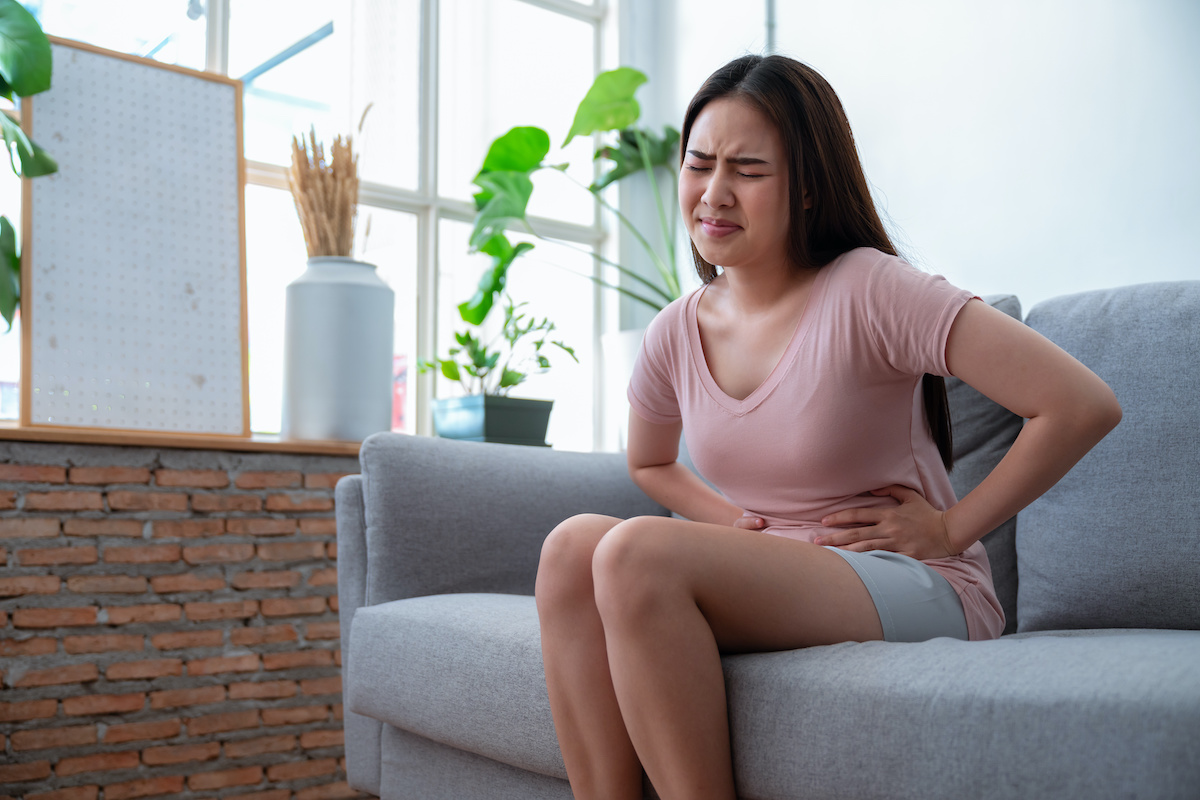March is Endometriosis Awareness Month. The aim is to educate people on this health condition that affects millions of people around the world. While awareness has increased in recent years, many people don’t know about the condition. While your women’s health provider is the best resource you have, you can find out more about the symptoms of endometriosis and how they’re treated in this post.
What is Endometriosis?
Endometriosis occurs when tissue, similar to the lining of the endometrium, grows outside the uterus. The tissue that grows outside the uterus in endometriosis is not the same as endometrial tissue, but they have some features in common.
The tissue can develop anywhere in the body, but it usually affects the pelvic area, including:
- the ovaries
- the fallopian tubes
- tissues that support the uterus
- the outside of the uterus
Endometrial tissue can also develop in other areas, including the digestive tract, the lungs, and around the heart.
The body usually expels this type of tissue during menstruation, but the tissue that forms in endometriosis may remain in the body, which can lead to inflammation. As tissue decomposes, scar tissue can form.
Symptoms of Endometriosis
The most common symptoms of endometriosis are pain and infertility. Other common symptoms of endometriosis include:
- Painful or even debilitating menstrual cramps, which may get worse over time
- Pain during or after sex
- Pain in the intestine or lower abdomen
- Painful bowel movements or painful urination during menstrual periods
- Heavy and/or irregular menstrual periods
- Premenstrual spotting or bleeding between periods
- Problems getting pregnant
- Diarrhea and/or constipation
- Low back pain
- Chronic fatigue
Treatment Options
There is currently no cure for endometriosis, but there are treatment options for related pain and infertility.
Healthcare providers consider several factors when determining the best treatment for endometriosis symptoms, including:
- Your age
- How severe your symptoms are
- How severe the disease is
- Whether you want children
Not all treatments work well for all women with endometriosis. Also, endometriosis symptoms may return after the treatment is stopped or, in the case of surgery, as more time passes after the procedure.
Treating Pain Caused by Endometriosis
There are several ways that doctors treat the symptoms of endometriosis and relieve pain.
- Pain medication: Pain medications may work well if pain or other symptoms are mild. These medications range from over-the-counter pain relievers to strong prescription pain relievers. The most common types of pain relievers are nonsteroidal anti-inflammatory drugs, also called NSAIDs.
- Hormone therapy: Hormone treatments stop the ovaries from producing hormones, including estrogen, and usually prevent ovulation. This may help slow the growth and local activity of both the endometrium and the endometrial lesions. Treatment also prevents new areas and scars (adhesions) from growing, but it will not make existing adhesions go away
- Surgical treatments: Healthcare providers may recommend surgery to treat severe symptoms of endometriosis. During these procedures, the surgeon can locate any areas of endometriosis and examine the size and degree of growth; he or she also may remove the endometriosis patches at that time.
- Laparoscopy: A surgeon inserts a small viewing instrument with a light, called a laparoscope, lasers, or other surgical instruments to remove or destroy the lesions and scar tissue that could be causing pain.
- Laparotomy: In this major abdominal surgery procedure, the surgeon may remove the endometriosis patches. Sometimes the endometriosis lesions are too small to see in a laparotomy.
- Surgery to sever pelvic nerves: If the pain is in the center of the abdomen, healthcare providers may recommend cutting nerves in the pelvis to lessen the pain.
Treating Infertility Linked to Endometriosis
In most cases, healthcare providers will recommend a laparoscopy to remove or vaporize the growths to also improve fertility in women who have mild or minimal endometriosis.
If pregnancy does not occur after laparoscopic treatment, in vitro fertilization (IVF) may be the best option to improve fertility. Taking any other hormonal therapy usually used for endometriosis-associated pain will suppress ovulation and delay pregnancy.
Contact Green Valley OB/GYN
Green Valley OB/GYN has been providing the highest quality of obstetric and gynecological care for over 70 years, offering a comprehensive list of services, including obstetrics and pregnancy care. To set up an appointment or talk about your health, call us at (336) 378-1110 to schedule an appointment.
